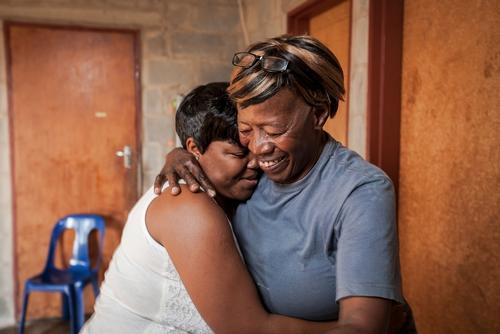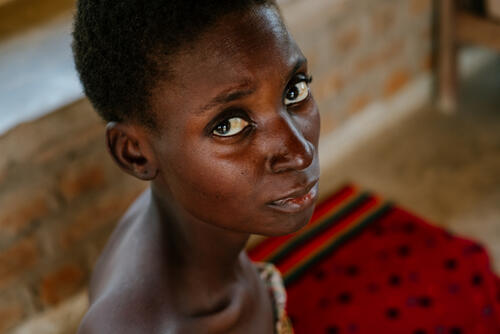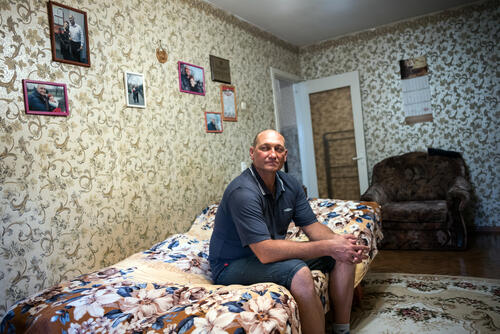- MSF’s project in Eshowe, South Africa, has achieved and surpassed UNAIDS’ 90-90-90 HIV testing and treatment target, one year before the 2020 deadline.
- The project achieved results including 94 per cent of HIV positive people on treatment, and 95 per cent of those having no detectable HIV virus.
- These great results show that the 90-90-90 targets can be achieved by working with the community.
Médecins Sans Frontières (MSF) has released findings from a follow-up survey of our community-based HIV/TB project in Eshowe, KwaZulu Natal, South Africa. The findings show that the project has achieved the UNAIDS targets of 90-90-90 one year ahead of the 2020 deadline.
What are the 90-90-90 targets?
The 90-90-90 targets were set by UNAIDS in 2013 with the aim of scaling up HIV testing and treatment. The targets state that by 2020:
90 %
9%
90 %
9%
90 %
9%
The survey ended with the result of 90-94-95, meaning 90% of people living with HIV know their status, 94% of people living with HIV were on antiretroviral treatment and 95% of those had a suppressed viral load. The results support MSF’s view that interventions at community level can successfully reach and directly support more people living with HIV who do not access conventional health services, which is key to getting ahead of the HIV epidemic.
MSF results from Eshowe, South Africa
The results of MSF's and Epicentre's survey of people in Eshowe, KwaZulu Natal province in 2018 shows that:
90 %
9%
94 %
94%
95 %
95%
Results show 90-90-90 target is possible
Along with similar findings from several other HIV population surveys, including two surveys released at the SAAIDS conference this week
We’ve shown that it’s possible to reach 90-90-90 in an area with one of the highest HIV infection rates in the country, where one in four people is living with HIV.Dr Liesbet Ohler, MSF Project Medical Referent, Eshowe
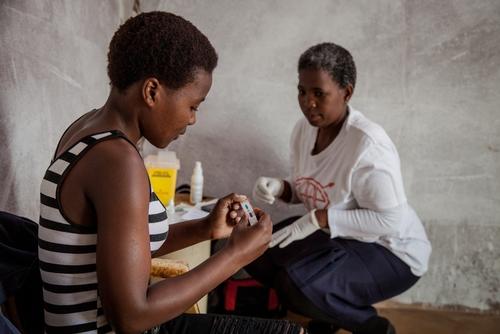
“We’ve shown that it’s possible to reach 90-90-90 in an area with one of the highest HIV infection rates in the country, where one in four people is living with HIV,” said Dr Liesbet Ohler, Project Medical Referent, Eshowe. “These results are testament to the full engagement of the entire community. Everyone - from local civil society and patient groups, health staff and traditional health practitioners, traditional leaders and their members – was deeply involved in designing and helping this project to deliver from the beginning.”
“Importantly, we have ensured 94 per cent of people who tested HIV positive started treatment, including people who are much less likely to test for HIV and link to care, such as men,” said Dr Ohler.
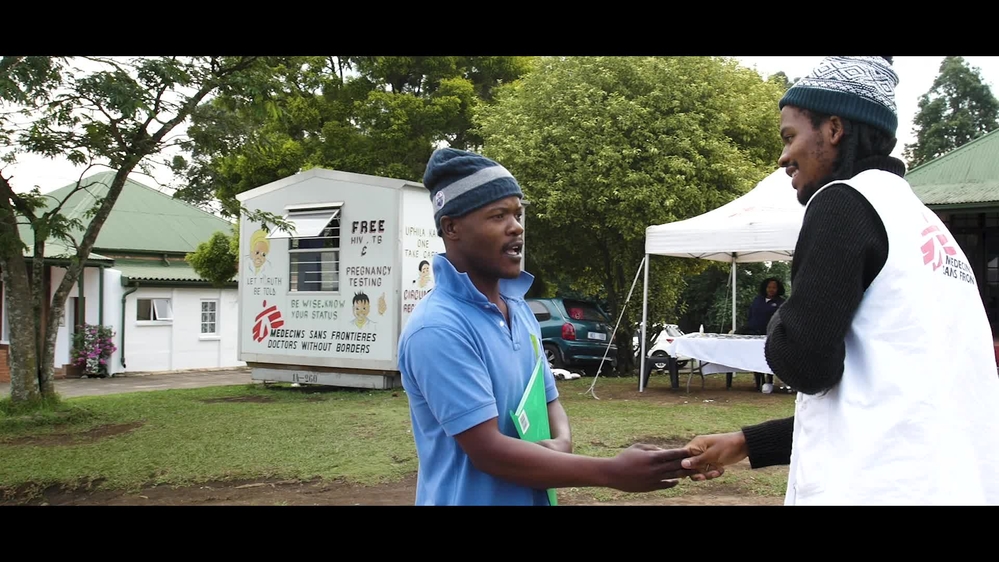
Eshowe HIV project reaches 90-94-95
Significant improvement in numbers five years on
The MSF Epicentre population-based survey, which included 3,286 people aged 15 to 59 years, is a follow up to a 2013 survey done by MSF and Epicentre in the same area which was performed to inform priority activities.
The 2018 survey found a significant increase (by 14%) in overall HIV status awareness and in starting people on treatment (increased by 24%) between 2013 and 2018. Among men, there were striking increases in people’s knowledge of their HIV status (the first 90), from 68% to 83%, and the number of people on treatment (the second 90), from 68% to 87%.
Preliminary HIV incidence results (which means the number of new HIV infections) show a trend to decrease, from 1.2% in 2013 to 0.2% in 2018. This is supported by survey findings which show that among the people surveyed, the proportion of those living with HIV who were virally suppressed
Challenges with young women and men remain
However, MSF cautions against interpreting the survey results as an outright declaration of victory, with significant challenges remaining among specific age groups.
“While incidence decreased among women aged 15-29 years from 2.9 per cent to 1.2 per cent, this figure remains high, and points to the continued risk faced by adolescent girls and young women, said Dr Laura Trivino, MSF’s Medical Coordinator for South Africa. “Difficulties remain in reaching men, who overall achieve poorer treatment outcomes across the cascade of diagnosis and treatment.”
“More than half of young men aged 15 to 29 years diagnosed with HIV are still not on treatment,” said Dr Trivino. “We hope these findings will help focus our collective energies on reaching these groups who remain the most vulnerable to HIV.”
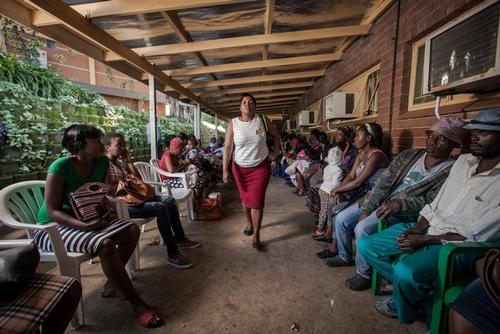
Bending the curves in cooperation with the community
The ‘Bending the Curves’ project, which started in 2011 before the 90-90-90 targets were set by UNAIDS in 2013, aimed to ‘bend the curves’ of new HIV infections, and HIV-related illness and death. Numerous activities were launched in partnership with communities and the KwaZulu Natal Department of Health to prevent HIV infection, increase HIV testing, link people quickly to care, and support their adherence, retention and suppression on treatment.
Today the project covers ten clinics and two hospitals. Early on, the project invested in community-based prevention and HIV testing strategies, including extensive door-to-door testing by lay workers, with over 120,000 door-to-door tests conducted between 2012 and 2018. Between 2015 and 2018, 1.35 million condoms were distributed annually.
“How did Eshowe get to 90-94-95? I would say it’s the power of partnership. We had the total commitment of the traditional leadership, and close collaboration with the departments of Health and Education at each stage, says Musa Ndlovu, MSF’s Deputy Field Coordinator in Eshowe. “In the early days of this project, it was almost impossible for people to even imagine talking about HIV. Today people even stop our MSF vehicles and ask for an HIV test. We didn’t do it for the community, we did it with them.”
About the 2018 MSF Epicentre survey:
The MSF Epicentre population-based door-to-door survey included 3,286 people aged 15 to 59 years living in Wards 1-14 of the uMlalazi Municipality in King Cetshwayo district (population 114,480). The results were compared to the findings of a 2013 MSF Epicentre survey of 5,649 people aged 15-59 years in the same area. Participants completed detailed questionnaires and had an HIV test done; if confirmed HIV positive, further blood tests were taken to measure viral load and CD4 counts.
The main objective of the 2018 MSF survey was to estimate viral load suppression among HIV positive people aged 15-59, as well as quantify the cascade of care for HIV positive people and compare the results with the 2013 MSF survey.
Main findings of the 2018 MSF Epicentre survey
• HIV Cascade (90-90-90): from 76-70-93 (2013) to 90-94-95 (2018)
• First 90: Overall increase in HIV positive status awareness from 76.4% to 89.7% of the general population
• Second 90: Number of HIV positive people taking antiretrovirals increased from 69.9% to 93.8% of those who tested positive for HIV.
• Third 90: Overall viral suppression among those taking antiretrovirals was 94.5%. The proportion of HIV positive on treatment or not with viral load levels > 1,000 copies/ml decreased from 43% to 16%.
• HIV Incidence: Preliminary results suggest that overall annual incidence has decreased from 1.2% to 0.2%
• Advanced HIV Disease: The proportion of people living with CD4 <200 cells/µl decreased from 9.8% to 4.6%.




